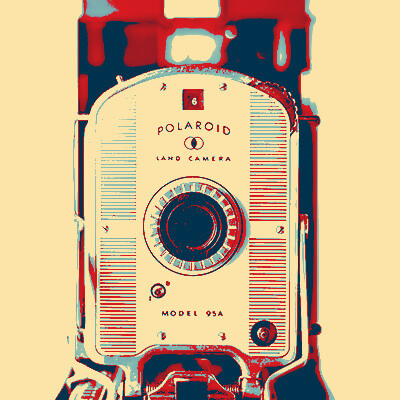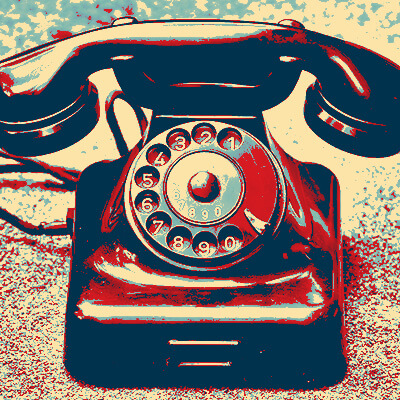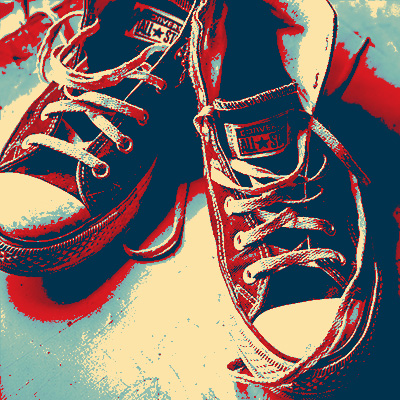I have had two great sessions with GroovyTek and finally I have learned to use my smartphone calendar! I'm looking forward to my next session.
Need Help? Call Us.
877.201.3586
In More Familiar Times: Do you Remember When?

How Personal Technology Has Evolved?
Remember the days when a phone was actually a phone with a cord, and your radio had a dial and a speaker attached? Remember the days when your phone wasn’t on talking terms with your 35mm camera or your record collection? Remember when your car radio would play “Brown Eyed Girl” from the 8-track without inexplicably deciding to quit? Sure, the 8-track tape player may have eaten up your tape once in awhile, but at least you knew EXACTLYwhat had happened and what needed to be fixed. One final memory: when you wanted to write to someone, you just pulled out a pen and pad of paper and never —NOT EVEN ONCE—would the pen or pad get mouthy and try to tell you what you should write or how to spell? There is much to remember fondly about those days.
There were at least four things you could count on back then:
- You knew the brands who made TVs, radios, and stereos, and everyone used Bell for their telephones. In short, you knew which brands you trusted.
- You just plugged something in and it usually worked without too much fuss.
- Everything came with a “somewhat” readable user’s manual.
- And if you ran into a problem, you could pick up the phone or go into a local store and talk to a person.
So when did everything start to change?
For our purposes, we decided to focus on the evolution of personal technology, starting with the “big bang” in 1989—the start of the internet. This singular innovation has changed both our technological and cultural environments in ways we couldn’t have imagined.
Please note: we don’t assume that the events we chose to highlight are the entire story, but we do believe that they are useful for us to better understand how we got from there to here—from 1989 to now. From dial phones, Polaroids, and hi-fi stereos, to mobile phones and tablets that do it all. From what felt comfortable and familiar, to what often feels strange and confusing.
1989
WORLD WIDE WEB is invented by Tim Berners-Lee
TimBL’s creation of the WWW is the BIG BANG of the internet universe. 1990 SLIP/PPP (Serial Line Internet Protocol and Point-to-Point Protocol)—the technologies that got everyone on the internet via dial-up modems.
With SLIP, the telephone company can install a modem in your home. The modem uses your phone to connect you with the internet. In 1990, the speed of that connection seems amazingly fast (but compared to today’s speeds, it’s like a snail racing a Boeing 747).
1992
THE BROWSER is brought to market
Because of the browser, everyone has a way to give and get information through the internet. The internet creates the basis for connections; the browser gives us a way to use those connections to communicate. It’s like a light bulb and electricity—the bulb has the capacity to give light, but electricity makes that capacity a reality.
on over the phone sessions to stay connected with your trainer.
1993
EMAIL becomes a mainstream communication option—“You’ve got mail!”
Businesses and individuals start to use email as a consistent form of convenient communication. Now you have a specific tool to organize your communication. Just as typewriters outperformed pens, email leaves traditional mail in the dust, and you don’t even need a stamp!
1993
PDF (Portable Document Format) file type is created by Adobe
The first effective document sharing innovation PDF is a format that makes it possible to send documents over email. Now you can add attachments to your messages, making it easy to share important files. The introduction of PDFs represents the beginning of the end for fax machines.
1996
USB (Universal Serial Bus)
The USB becomes the standard for all device manufacturers for computer manufacturers to be able to talk to varied devices (e.g., printers, monitors, hard drives, cameras, smartphones) there needed to be a standardized “plug,” or a shared language. Have you found yourself in another country trying to plug in your hairdryer or electric shaver and realize your plug and the receptacles don’t match? Think of USB as that universal adapter that creates the match.
1996
MP3 audio format is created and it changes an entire industry
The MP3 format creates files made from CDs that are small enough to be shared peer-to-peer. Essentially, MP3s enable the content of one CD to be shared hundreds of thousands of times. The impact of this shareable music file format leads to the demise of record companies and brick and mortar record stores as we knew them.
1997
Broadband hits the market, and fast internet service starts to appear in homes
Broadband allows the internet to move from a snail’s pace, to the pace of a 747. It supports the use of “rich media,” which is the inclusion of images, videos, music, and interactive games. With broadband, the internet becomes a newspaper, post office, camera, TV, stereo, information resource, and entertainment center all rolled into one.
1998
Google makes its debut
The internet is dynamic and virtually inexhaustible in what it contains and can provide, but how can people find what they’re looking for within this boundless universe? It’s like having a massive library without any system for identifying or finding what is there (remember the card catalog?). This is where Google first made its name; Google becomes the most popular search engine by understanding us—how we think, and how we go about finding what we want to find.
1999
Wi-Fi (Wireless Fidelity) comes to existence
Wi-Fi frees people from being tethered to a hard-line connection to get internet service. People can move around freely within the Wi-Fi parameters and be fully connected to the internet. Today, it’s harder to find places without Wi-Fi, than places with it. Now the kids’ most frequently asked question wherever you go is, “What’s your Wi-Fi  password?”
password?”
Client Reviews
GroovyTek has helped me, a 65 year old, learn how to do all sorts of things on my computer that I did not know about before. I had no one else to ask, and they have rescued me. It's so great to have a polite, friendly, knowledgeable person come to my house and teach me. What a wonderful service!
Margie C
I was just delighted and on my way to practice new found skills. My trainer was on time, friendly, knowledgeable, and very patient with this little old lady (age 78). I didn't have to take notes to remember - he recorded it on his tablet and sent me a copy to download so I have my instructions, step by step. So pleased with the service and the follow-up.
Karen M
A wonderful service in every aspect from calling in to set up an appointment with GroovyTek and follow ups as well as the fabulous help, patience and expertise of the tech who came to the house to work with me with my computer issues. I would highly recommend GrooveyTek for all your computer needs! Thanks so much!
Jean G
Very pleased with the experience. Knowledgeable trainer who was most helpful. Highly recommend the service.
Michael M
I had a serious issue with my bank website not being secure. This was a very technical problem. I used the Remote Session option to get help. My GroovyTek trainer kept at it until we finally resolved the issue.
Jeff W
I'm very pleased with my session today with GroovyTek. My trainer was able to fix both my computer and my printer (problems with both) and instructed me on how to correct the issues if they occurred in the future. We also made plans for my next session. I find GroovyTek sessions extremely helpful and convenient since they are in my home.
Eva S
GroovyTek did a great job! My trainer was on time, professional and she solved my slow computer. Great job, GroovyTek! I will use your services again.
Marcia F
I have been very pleased with the IT trainers from GroovyTek who have been to my house. They were very helpful!
Karen B
It is comforting to know if you have technical problems there is a Hands On source to get help. These trainers listen to your problems, find solutions and work with you until you understand the solution, their patience is outstanding. This is a great way to not only solve problems but to learn about the ever-changing world of technology; there are class presentations, small group gatherings or one-on-one in your home with kind, friendly, people.
Ingrid S
My tech is patiently bringing me (at age 79) into the computer age. I am so glad that I found him through GroovyTek. What a wonderful gift!
Judy K
I had a session with GroovyTek over the phone today. It was extremely helpful to me because I was able to see everything that he was doing on my computer as he was talking. I was then able to follow his actions to do what he was doing as well. What a way to go!
Carole M
Outstanding trainers with expertise and a lot of patience at a fair price. I have used them for two years and they have given me a much better understanding of the in's and outs of how to use many aspects of my computer. It is a pleasure to have them come to my home and work on my own computer problems.
Jerry P
My tech from GoovyTek has been terrific. He is patient, knowledgeable, and explains things really well. I enjoyed learning new tools and features on my smart phone and computer. They have made doing things a lot easier and more enjoyable.
Jennifer H
Very impressed with my trainer’s ability to provide thorough explanations and demonstrations. I have confidence now in knowing how to manage my photos, videos, and documents. I received my money’s worth of valuable instruction.








